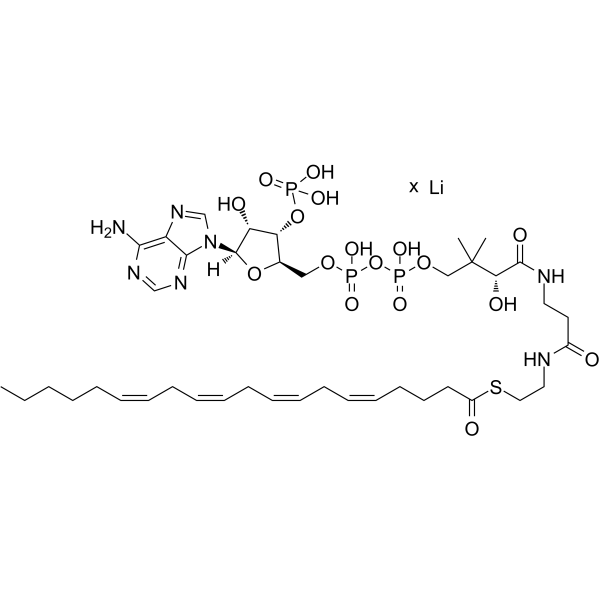| Structure | Name/CAS No. | Articles |
|---|---|---|
 |
arachidonoyl coenzyme a (c20:4) lithium salt
CAS:188174-63-2 |
Valerie Yeung-Yam-Wah, Andy K Lee, Frederick W Tse, Amy Tse
Index: Cell Calcium 47 , 77-83, (2010)
Full Text: HTML
Arachidonic acid (AA) is generated in the pancreatic islets during glucose stimulation. We investigated whether AA activated extracellular Ca(2+) entry in rat pancreatic beta cells via a pathway that was independent of the activation of voltage-gated Ca(2+) channels. The AA triggered [Ca(2+)](i) rise did not involve activation of GPR40 receptors or AA metabolism. When cells were voltage clamped at -70mV, the AA-mediated intracellular Ca(2+) release was accompanied by extracellular Ca(2+) entry. AA accelerated the rate of Mn(2+) quench of indo-1 fluorescence (near the Ca(2+)-independent wavelength of indo-1), reflecting the activation of a Ca(2+)-permeable pathway. The AA-mediated acceleration of Mn(2+) quench was inhibited by La(3+) but not by 2-APB (a blocker of capacitative Ca(2+) entry), suggesting the involvement of arachidonate-regulated Ca(2+) (ARC) channels. Consistent with this, intracellular application of the charged membrane-impermeant analog of AA, arachidonyl-coenzyme A (ACoA) triggered extracellular Ca(2+) entry, as well as the activation of a La(3+)-sensitive small inward current (1.7pA/pF) at -70mV. Our results indicate that the activation of ARC channels by intracellular AA triggers extracellular Ca(2+) entry. This action may contribute to the effects of AA on Ca(2+) signals and insulin secretion in rat beta cells.2009 Elsevier Ltd. All rights reserved.
| Structure | Name/CAS No. | Molecular Formula | Articles |
|---|---|---|---|
 |
arachidonoyl coenzyme a (c20:4) lithium salt
CAS:188174-63-2 |
C41H65LiN7O17P3S |
|
Identification of glycine N-acyltransferase-like 2 (GLYATL2)...
2010-08-01 [FASEB J. 24 , 2795-2803, (2010)] |
|
CGI-58/ABHD5 is a coenzyme A-dependent lysophosphatidic acid...
2010-04-01 [J. Lipid Res. 51 , 709-719, (2010)] |
|
In vitro synthesis of arachidonoyl amino acids by cytochrome...
2009-11-01 [Prostaglandins Other Lipid Mediat. 90 , 42-48, (2009)] |
Home | MSDS/SDS Database Search | Journals | Product Classification | Biologically Active Compounds | Selling Leads | About Us | Disclaimer
Copyright © 2024 ChemSrc All Rights Reserved